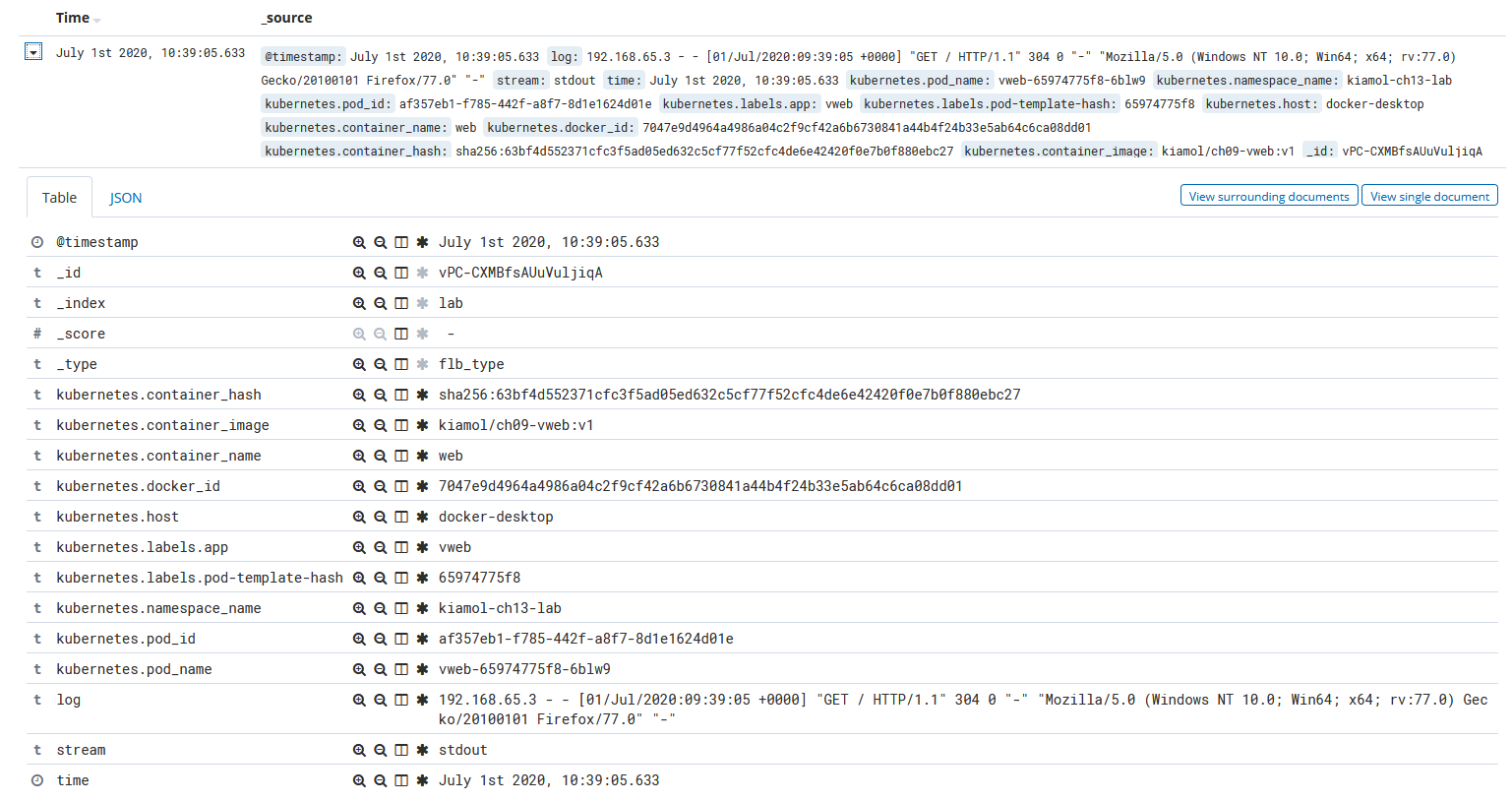Ch13 lab
Setup
Deploy the logging subsystem:
kubectl apply -f lab/logging/
Sample Solution
Part 1
Fluent Bit is configured to store entries from Pods in the namespace kiamol-ch13-lab.
Create that namespace and deploy the vweb app:
kubectl create ns kiamol-ch13-lab
kubectl apply -f lab/vweb/ -n kiamol-ch13-lab
Browse to the app which will trigger Nginx logs in the container.
Browse to Kibana and create an index pattern for the index called
lab- verify that logs are coming through.
Part 2
The logs are there, but not parsed so they're just text.
Deploy an update to the vweb Deployment which adds an annotation to use the Nginx parser:
kubectl apply -f lab/solution/vweb-with-parser.yaml -n kiamol-ch13-lab
Browse to the app again and refresh Kibana - the logs should have fields for HTTP path, response code etc.
Part 3
Now to filter out 304s, add a grep filter to the Fluent Bit config and update the Pod:
kubectl apply -f lab/solution/fluentbit-config-grep.yaml
kubectl rollout restart ds/fluent-bit -n kiamol-ch13-lab-logging
kubectl wait --for=condition=ContainersReady pod -l app=fluent-bit -n kiamol-ch13-lab-logging
Browse to the app again and refresh Kibana - no 304s are shown for recent requests
Teardown
Remove the namespaces and that removes everything:
kubectl delete ns kiamol-ch13-lab
kubectl delete ns kiamol-ch13-lab-logging


